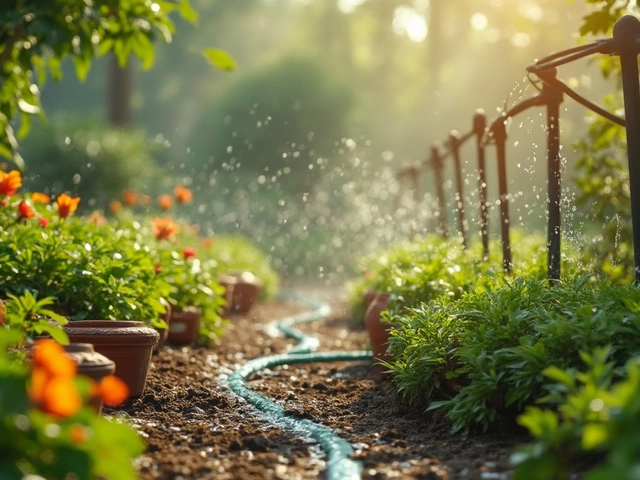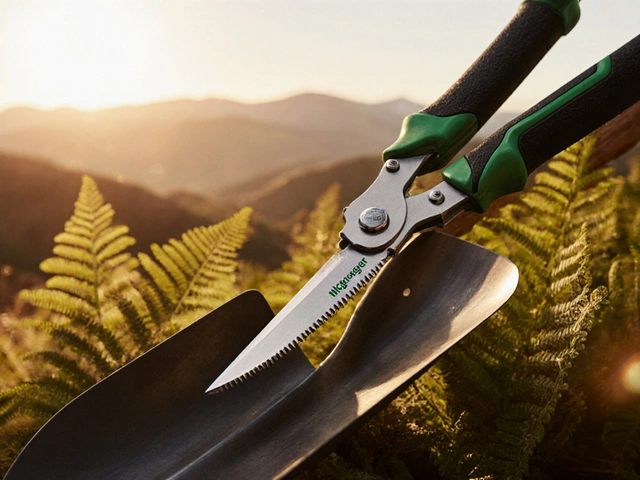Soil Enhancers: Simple Ways to Give Your Garden a Boost
If your garden feels sluggish, the problem is often the soil, not the plants. Adding the right soil enhancers can turn heavy, compacted ground into a thriving medium where roots breathe and nutrients flow. Below you’ll find practical, low‑cost tricks you can start using today.
Easy Organic Additives
Compost is the gold standard. A thin layer (about an inch) mixed into the top 6‑8 inches of soil adds organic matter, improves drainage, and feeds microbes. If you don’t have a compost bin, kitchen scraps like vegetable peelings or fruit waste work just as well when layered and left to decompose.
Coarse sand helps break up clay. Spread a handful over a square meter, work it into the soil, and you’ll notice faster water movement. Be careful not to add too much sand; the goal is balance, not turning the bed into a sandbox.
Well‑rotten manure supplies nitrogen, phosphorus, and potassium in a slow‑release form. Sprinkle a light layer, let it sit for a week, then turn it in. The smell fades quickly, and the soil becomes richer.
Coffee grounds are a popular home remedy, but they’re not a universal fix. Acid‑loving plants like blueberries and azaleas enjoy the slight acidity, while most vegetables prefer a neutral pH. Use grounds sparingly and mix them with other organic matter.
How to Use Soil Enhancers Effectively
Start by testing your soil texture. If you can squeeze a handful and it feels like mud, you likely need more aeration. If water pools on the surface, add sand or grit. For sandy soils, incorporate compost or leaf mold to retain moisture.
Apply enhancers during the off‑season or early spring. This gives the amendments time to break down before the main growing period. When you work them in, avoid digging too deep; most root zones thrive within the top 12 inches.
Remember the “one‑inch rule": add no more than an inch of organic material each year. Over‑amending can create overly fluffy soil that drains too fast, leaving plants thirsty.
Pairing soil enhancers with mulches also pays off. A layer of straw or shredded leaves on top locks in moisture, reduces weeds, and slowly adds organic matter as it breaks down.
Finally, keep an eye on plant response. Healthy leaves, strong stems, and consistent growth mean you’ve hit the right balance. If you notice yellowing or stunted growth, you may need to adjust pH or reduce a specific amendment.
With these straightforward steps, you can turn any patch of ground into a soil that supports vigorous, productive plants. No fancy chemicals, just common sense and a few everyday materials.
Top Soil Enhancers for Thriving Vegetable Gardens
As gardeners strive to cultivate lush and productive vegetable gardens, understanding the best soil enhancers becomes essential. By knowing what enriches the soil, gardeners can ensure robust plant growth and healthier crops. This article explores various natural and organic soil enhancers, dives into their benefits, and offers practical tips for use. Whether you're a seasoned gardener or a curious newbie, this guide will help you transform your garden soil into a fertile haven.
About
Soil Improvement
Latest Posts


How Much Water Should Flow from Your Drip Line?
By Alden Thorne Mar 28, 2025

McGregor Garden Tools Manufacturer - Who Makes Them & Why They Top the Garden Tool List
By Alden Thorne Oct 26, 2025

India's National Fruit: The Mango Explained
By Alden Thorne May 15, 2025

